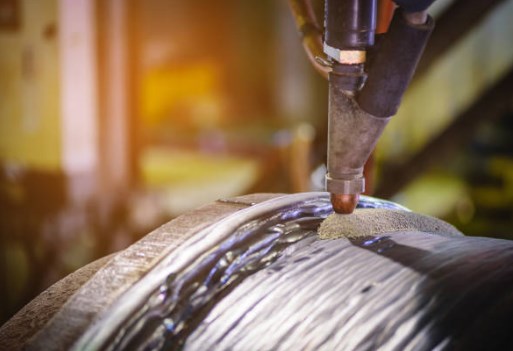Submerged Arc Welding (SAW) stands as one of the most reliable and efficient welding processes in industrial applications. Its ability to produce high-quality welds at a rapid pace has made it indispensable in various sectors, including shipbuilding, construction, and pipeline manufacturing. However, like any welding technique, SAW is susceptible to defects that can compromise weld integrity and structural strength. Among these defects, blow holes pose a significant concern due to their potential to weaken the weld joint and lead to catastrophic failures.

I. Understanding Blow Holes
Blow holes are voids or cavities that form within the weld metal during the welding process. They appear as spherical or elongated gas pockets trapped within the solidified weld bead. While blow holes may vary in size and distribution, even small voids can compromise the mechanical properties of the weld, such as tensile strength and ductility.
The presence of blow holes in a weld significantly reduces its structural integrity and load-bearing capacity. These voids act as stress concentrators, making the weld susceptible to fatigue failure and cracking under applied loads. Moreover, blow holes can serve as potential sites for corrosion initiation, further compromising the durability of the welded structure.
II. Causes of Blow Holes Defect in Submerged Arc Welding
Several factors contribute to the formation of blow holes during submerged arc welding. Understanding these factors is crucial for implementing effective preventive measures:
Contaminants: The presence of contaminants such as oil, grease, moisture, and rust on the surface of the base metal can introduce gas pockets into the weld pool, leading to blow holes. Proper cleaning and surface preparation are essential to remove these contaminants and ensure a clean welding environment.
Welding Parameters: Incorrect welding parameters, including excessive current, voltage, or travel speed, can result in inadequate shielding gas coverage and poor weld bead formation. Improper parameter settings can also lead to excessive spatter, which increases the likelihood of blowhole formation.
Electrode Handling and Storage: Improper handling and storage of welding electrodes can introduce moisture and other contaminants into the flux coating, affecting its ability to provide adequate shielding gas and slag coverage. Electrodes should be stored in a dry environment and handled with care to prevent damage to the flux coating.
III. Preventive Measures to Submerged Arc Welding Defects
To minimize the occurrence of blow holes in submerged arc welding, the following preventive measures should be implemented:
Pre-welding Checks and Material Preparation: Thoroughly inspect the base metal for contaminants and surface defects before welding. Remove any traces of oil, grease, rust, or mill scale using appropriate cleaning methods such as solvent cleaning, wire brushing, or grinding.
Electrode Drying and Storage: Properly dry electrodes in accordance with the manufacturer's recommendations to remove moisture from the flux coating. Store electrodes in a dry and temperature-controlled environment to prevent the absorption of moisture from the atmosphere.
Welding Techniques: Employ welding techniques that promote optimal gas shielding and weld bead formation. Maintain a suitable arc length and welding speed to ensure proper penetration and fusion while minimizing the risk of gas entrapment.
Selection of Electrode and Flux: Choose electrodes and fluxes that are specifically designed for the intended application and welding conditions. Consult with welding consumable suppliers to select the most suitable combination based on material composition, joint design, and welding parameters.
IV. Best Practices in SAW Welding to Prevent Blow Holes
Adhering to best practices in submerged arc welding is essential for preventing blow holes and ensuring weld quality:
Setting up Welding Parameters: Follow recommended welding procedures and parameter settings provided by welding procedure specifications (WPS) or equipment manufacturers. Adjust welding parameters as needed to achieve proper penetration and weld bead geometry without compromising gas shielding.
Maintaining Arc Stability: Maintain a stable arc throughout the welding process to promote uniform heat distribution and fusion. Avoid abrupt changes in welding speed or arc length, which can disrupt gas coverage and lead to blowhole formation.
Post-Welding Treatments and Inspections: Conduct post-weld inspections to detect and remedy any defects, including blow holes. Perform non-destructive testing (NDT) methods such as ultrasonic testing (UT) or radiographic testing (RT) to ensure weld integrity and compliance with quality standards.
Conclusion
In conclusion, preventing blow holes in submerged arc welding is crucial for ensuring weld quality, structural integrity, and long-term performance of welded components. By understanding the causes of blow hole formation and implementing preventive measures such as pre-welding checks, proper material preparation, and optimal welding techniques, welders can minimize the risk of defects and achieve high-quality welds. Adhering to best practices in submerged arc welding, including electrode handling, parameter settings, and post-weld inspections, is essential for mitigating the detrimental effects of blow holes and maintaining weld integrity in various industrial applications.
Related articles:
1. How to Identify the 7 Most Dangerous Welding Defects?
2. Tips for Troubleshooting Common MIG Weld Defects
3. Undercut Welding Defect: Causes, Prevention, and Repair
4. Welding Defects and Remedies in Steel Material
5. Welding Defects, Problems And Easy Solutions [2023]




